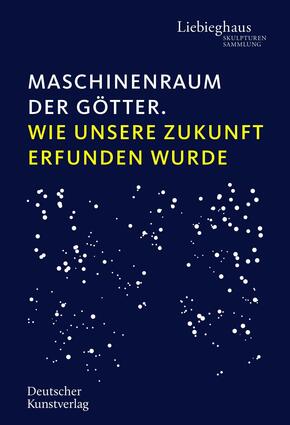Maschinenraum der Götter - Wie unsere Zukunft erfunden wurde
| Verlag | Deutscher Kunstverlag |
| Auflage | 2023 |
| Seiten | 280 |
| Format | 17,6 x 2,7 x 25,8 cm |
| Gewicht | 1127 g |
| ISBN-10 | 3422996346 |
| ISBN-13 | 9783422996342 |
| Bestell-Nr | 42299634A |
Die alten Kulturen Ostasiens, des Nahen und Mittleren Ostens und des Mittelmeerraumes zeichnen sich durch spektakuläre wissenschaftliche Erkenntnisse und Fortschritte aus, die in der Mythologie gespiegelt und gesteigert werden. In der Spätgotik nur zögerlich, in der italienischen Renaissance jedoch mit Macht dringt dieses Wissen zunächst gegen den Widerstand der christlichen Kirche in den europäischen Raum ein.
Das Begleitbuch zur Ausstellung verhandelt die aktuellste Forschung zu Wissenschaft und Technologie in Mythos und Kunst von der Antike bis in das goldene Zeitalter der arabisch-islamischen Kultur. Beleuchtet werden die frühen präzisen Aufzeichnungen astronomischer Ereignisse ebenso wie die Technologie der Automaten und kinetischen Skulptur. Neuste Erkenntnisse unter anderem zum berühmten griechischen Mechanismus von Antikythera, einem analogen Computer, oder zu den raffinierten drehbaren Decken und Böden der Bankettsäle im Palast des römischen Kaisers Nero vera nschaulichen die Bedeutung der Automatisation von Skulptur in ihren Bezügen zur Naturwissenschaft im islamisch-arabischen Kulturraum.
Großartige Kunstwerke, die antike Mythen wiedergeben, Modelle animierter Skulptur, eindrucksvolle wissenschaftliche Apparate und Automata des mediterranen und islamisch-arabischen Kulturraums Internationale Autor/-innen spiegeln die aktuellste Forschung zur Wissenschaftsgeschichte in Verbindung mit der Kunsttechnologie Ausstellung: Liebieghaus Skulpturensammlung, Frankfurt/M., 08.03.2023 bis 21.01.2024
Blick ins Buch
Rezension:
"The volume is not an in-depth discussion of the history of science but an engaging and accessible overview with some highlighted topics and an invaluable reminder that we need to study and interpret past peoples and their worlds more from their perspectives than from our modern viewpoint. Bringing the strands of myths, arts and technology together so clearly testifies to imagination being at the start of any innovation or new technology." (Marion Uckelmann in: Antiquitiy, 2024, Vol. 98)
The ancient cultures of East Asia, the Near and Middle East and the Mediterranean were characterised by spectacular scientific findings and advances, which are mirrored and enhanced in their mythology. Hesitantly in the late Gothic period, but more insistently during the Italian Renaissance, this knowledge gradually permeated Europe, although initially meeting with resistance from the Christian Church. The book accompanying the exhibition deals with the latest research on science and technology in myth and art from antiquity to the golden age of Arab-Islamic culture. Light is shed on the early precise records of astronomical events, as well as the technology of automata and kinetic sculpture. The latest findings relating e.g. to the famous Greek Antikythera mechanism, a form of analogue computer, or the sophisticated revolving ceilings and floors of the banquet halls in the Roman Emperor Nero's palace illustrate the significance of sculpture's automatisation in reference to th e natural sciences in Islamic-Arabic culture.
Magnificent works of art reflecting ancient myths, models of animated sculptures, impressive scientific apparatus and automata from the Mediterranean and Islamic-Arab cultural spheres International authors reflect on current research into the history of science in conjunction with art technology Exhibition: Liebieghaus Skulpturensammlung, Frankfurt/M., 08.03.2023 to 21.01.2024
Look inside




















